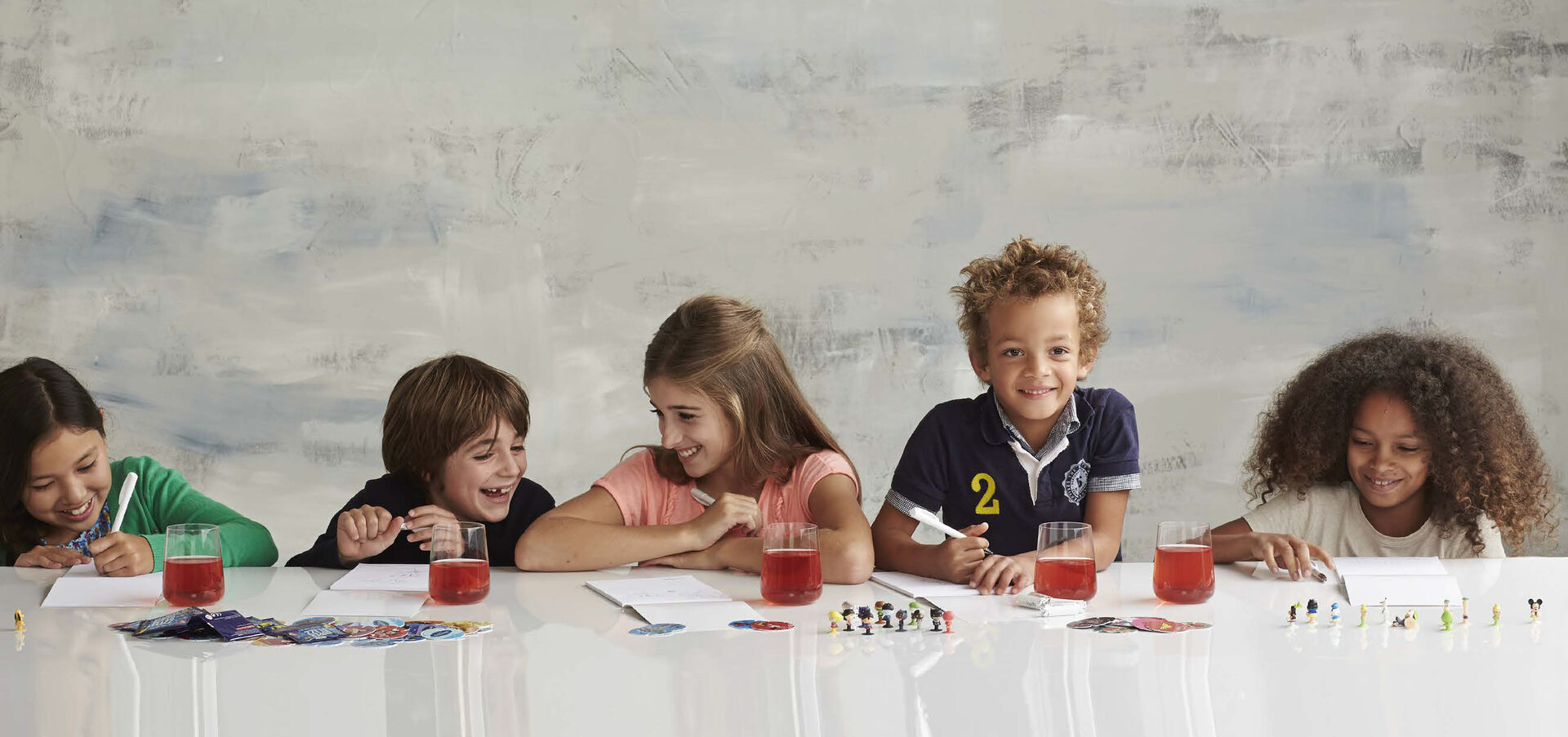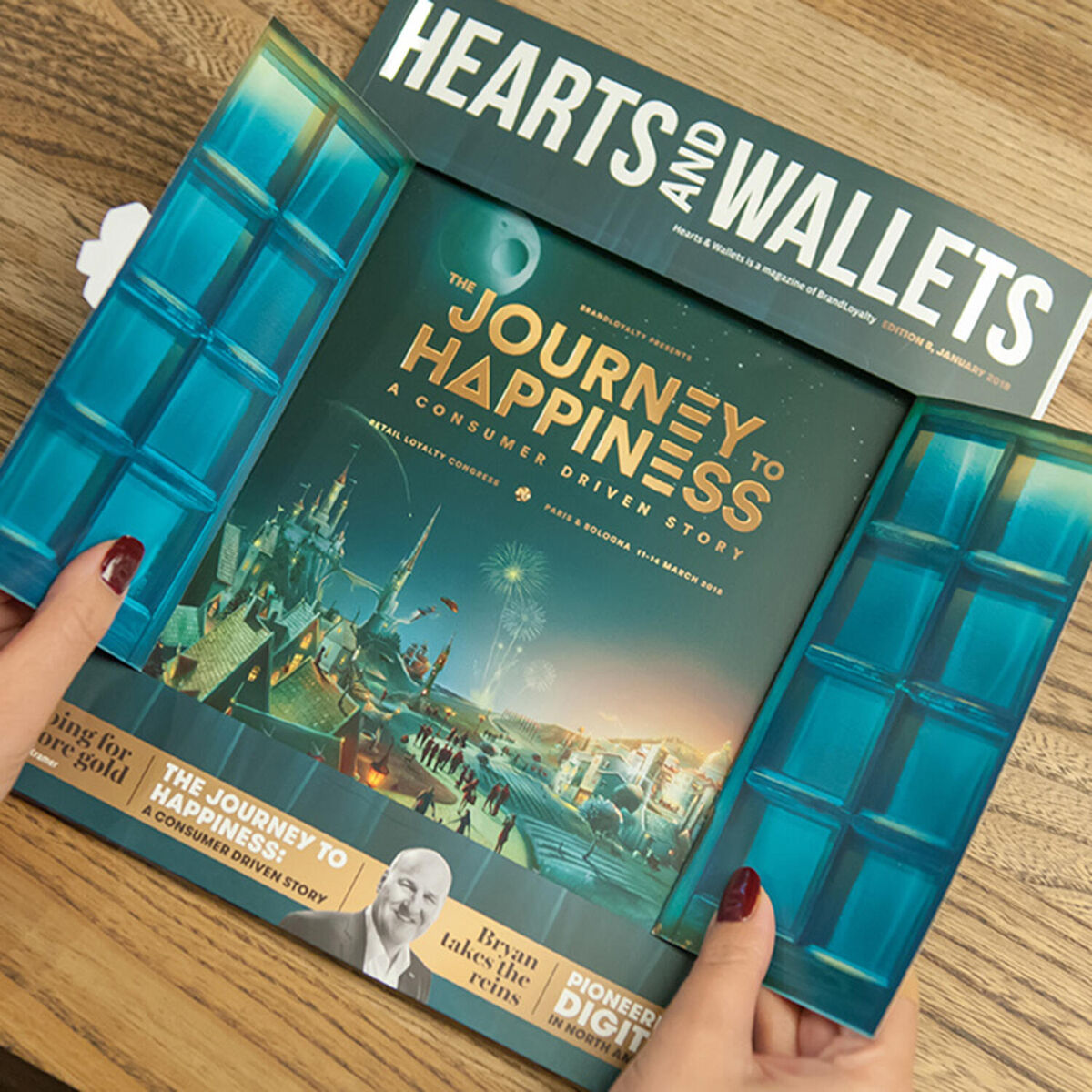
The CEO of LoyaltyOne has spent the last 25 years in the industry, and never shys away from the next loyalty challenge. During his time as CEO of BrandLoyalty Hearts & Wallets caught up with him to find out more about the man behind loyalty.

Nobody knows more about how children think than children themselves. Understanding how small minds work is key to ensuring the success of a kids’ promotion. What we adults think is cool, fun or stylish may be totally rejected by the children for whom it´s intended. To get children on your side, you need to ask the right questions, at the right time, in the right way, and then implement the answers in the right manner. Miranda Evans, Kid's Expert at BrandLoyalty, describes some of the techniques involved.
An increasing number of supermarkets in Europe are trying to attract families with children by using Instant Loyalty Programmes (promotions targeted at kids) to offer attractive giveaways. However, most promotions are directly competing with one another, making it even more difficult for retailers to stand out. Popularity is no longer a given. We see more and more concepts in the market that are just not delivering the emotional and transactional engagement that retailers are looking for. Nowadays, we need to know at a far earlier stage how well a new programme will work. That´s why we ask consumer experts to help us create and test new concepts before they go to market. In the case of our kids’ promotions, these experts are children aged 6 to 12. Kids can be cruel in their comments when observing programmes: they often find them too childish, uninspiring or geared towards adults. It can be quite tricky developing the right concept for such a demanding target group, but there´s one big advantage: when telling you what they like and dislike, kids are very honest.
Keep it colourful and simple...
Once we created a concept which was state-of-the-art, liked by our design department and welcomed by retailers across Europe. The album was dark and stylish, the mechanics were innovative (at that time) and the whole concept could be nothing less than a success, according to all the adults involved.
Unfortunately, the campaign did not meet everyone´s expectations. It was by speaking to children that we discovered the reasons why: kids prefer bright colours to stylish dark ones, and the new mechanism was not understood (kids like things to be simple). Since then, we´ve made it a priority to involve children every step of the way.
… and don't forget about mum too!
Mothers are important gatekeepers in the process: they do the shopping and make the final decision about whether or not to participate in a kids’ promotion. If mothers dislike the programme, they won´t endorse it to their children. On the other hand, if a programme is educational or fun, they will bring a giveaway home to surprise their offspring even if they didn´t ask for it. Of course, mothers will also take home the gifts if children are really enthusiastic about them, but a promotion is stronger if mothers endorse it by themselves. Imagine the impact to your brand image if you always deliver programmes mothers don´t like but feel they have to take home. No retailer wants mums discussing their brand in a negative way in the school playground or on social media.
Taking a structured approach
To optimise the input we get from the experts, we use a three-stage process: home visits, Kids Connection sessions, and concept testing sessions. Using these three steps, we gather ideas for new promotions, develop new concepts and validate finalised ideas.
1. Home visits
In order to discover the latest trends, we have to go into the field, i.e. to children’s homes. Home visits are a proven method to uncover trends, gain understanding and experience the target group´s world first-hand.
During these home visits, we follow kids and their families for an entire day. This involves joining a parent to pick children up from school, walking around children’s homes and bedrooms, seeing how they behave, and asking them and their parents relevant questions. This allows us to observe their habits and to understand their world.
Many of the observations we make during home visits are similar to or correlate strongly with one another. We group similar observations into platforms which constitute a springboard for future concept creation and development, and we give each distinct platform its own name. Examples from previous projects include Keep Me Busy, Imitating Mum, Little World, Fantasy, Obsession, All Together, and School Playground. These platforms are great sources of inspiration and trends.
2. Kids Connection
Based on the previously defined platforms, we develop the first sketches and prints for new concepts. During this stage, we run into many practical questions: Should it be green or red? Is it too childish? Is the size right? Is it the right licence? Many uncertainties - small and large - arise during the concept development stage. To make sure we take the right steps, we hold Kids Connection sessions during which we ask the experts how to proceed. These sessions involve talking to children and their parents about their opinions and ideas on concepts. They serve as an initial form of acceptance testing, as well as a way to enrich our platforms and better understand licence preferences.
3. Concept testing
A concept takes shape once we’ve taken several steps, gained certain insights and held Kids Connection sessions. However, it’s possible to follow all the right steps and still get things wrong, even after doing everything correctly to mitigate the risk of the programme failing. To test acceptance of the final concept, we always organise focus group sessions in several countries.
These sessions involve discussing new concepts with target groups in a structured fashion. They allow us to observe initial reactions and to gain deeper insights into the programme’s mechanics. We always work with external research companies to prevent validation bias.
Disney Super Flizz: why it ticked all the boxes
Our Disney Super Flizz concept scored highly on 5 key aspects necessary for success, in all the countries where it was tested. One of the things seen in the home visits was that the Disney brand is known and loved in a majority of the households with children (especially young children): the core target group of an ILP. Another discovery was finding creativity everywhere! Kids love to make things, build, invent and experiment. Based on these perceptions, we created a platform called ‘Made By Me’ where we bundled all our insights on this topic. By combining these insights, we arrived at the Disney Super Flizz concept. After finetuning it in the Kids Connection sessions (where we learned that the Princess shooters were not appealing to boys and older girls, though tolerated), we were happy to present it to the children doing the concept tests in several countries. We measure the success of our concepts in five categories: excitement, gender appeal, collectability, playability and show-off value.
Collectability
It´s important to consider whether children need a whole collection, or whether just a few items will work too. The diversity of the Disney Classic and Pixar characters strongly encouraged collectability, though the mothers were not sure if their kids needed to collect them all to be satisfied, due to the high playability factor. The girls had a stronger focus on collectability, which was enhanced by the collector’s album filled with appealing graphics.
Excitement is essential
Kids’ promotions need to generate a strong initial response for the programme to quickly gain interest. The Disney Super Flizz clearly held an instant appeal for children, who all thought they were really cool. The characters are widely known, and a combination of Disney Classic and Pixar ensures such promotions always contain characters that kids like. However, the slightly older children (aged 11 and 12) experienced less affection towards the licence, but the fact that you could shoot the Super Flizz made it cool again for boys! The younger children experienced difficulty in shooting them but we are eager to learn. In general, we saw the excitement level amongst kids going sky-high when they found out that they could actually shoot the Flizz through the air.
Concepts must appeal to both sexes
To guarantee success, a concept needs to appeal to both boys and girls. Boys, as well as girls, liked the Disney Super Flizz concept, although boys stated that they would not collect the Princess Flizz. Girls really liked building and collecting the Super Flizz, while boys were more focused on the shooting effect. Parents saw the strength of the concept as they also find the Pixar characters attractive. Although not all parents liked the Super Flizz flying through the room that much themselves, they indicated that they would definitely let their children collect them.
Playability
To ensure that children remain engaged with a concept, it’s important that they engage in active play or role-play. Super Flizz are considered multifunctional and can be seen as a toy. The various games - shooting, building, playing - appeal to a broad target group, though the shooting technique requires clear explanation and communication. Nevertheless, children tend to constantly reinvent their own games, although they might avoid playing with their main collection and just focus on playing with their doubles as not to damage their precious unique items.
Show-off value
Playground show-off value ensures that children keep playing with the items they’ve collected, and creates a hype effect. Due to their size, Super Flizz are easily taken to school where they are traded and played with. In general, quantity is important as having the most Flizz gives you status.
However, girls are also very interested in collecting the ‘specials’ (i.e. Flizz with glitter effect), but it does not really matter which picture is on the Super Flizz. In addition to the album, a collector’s bag or collector’s tube is appreciated by children as it helps them take their Flizz to school. In the end, we cannot resist feeling proud when a thoroughly tested concept also turns out to be a commercial hit: our Disney Super Flizz concept has been a huge success in France and is currently also making children smile in Romania and Croatia too!
Hearts & Wallets is the official magazine of BrandLoyalty. It is a magazine for people working at the highest levels of the food retail industry. The goal of Hearts & Wallets is to come up with real insights on - and answers to - current issues, while offering its own individual interpretation as food for thought.
First published in April 2015.
Read more articles from Hearts & Wallets
Read more in depth articles about the food and loyalty industries from previous editions of Hearts & Wallets magazine.
Go to overview
Want to receive Hearts & Wallets?
Hearts & Wallets is available to you digitally or in print, to add your name to the distribution list contact us below.
Request Hearts & Wallets